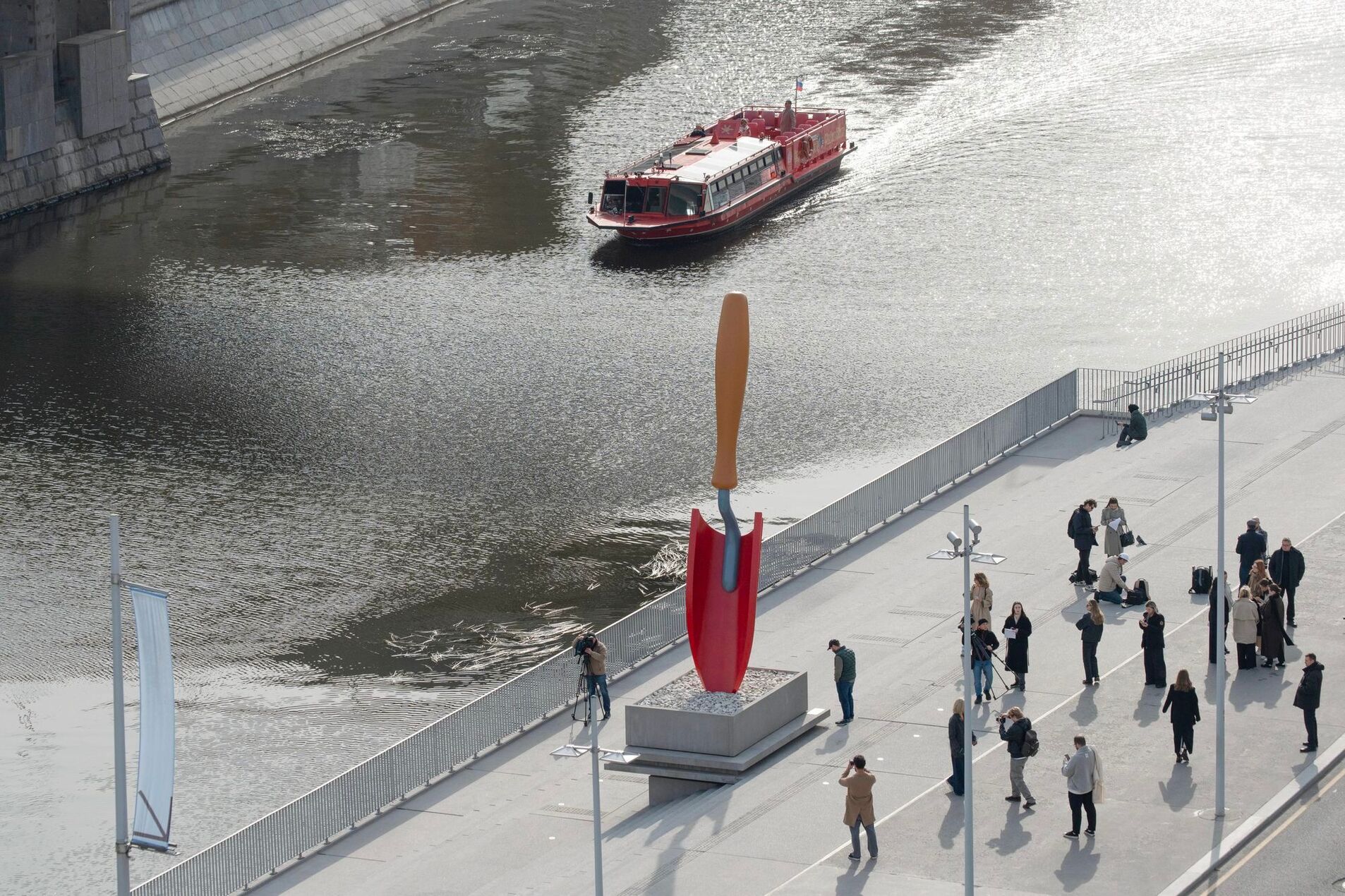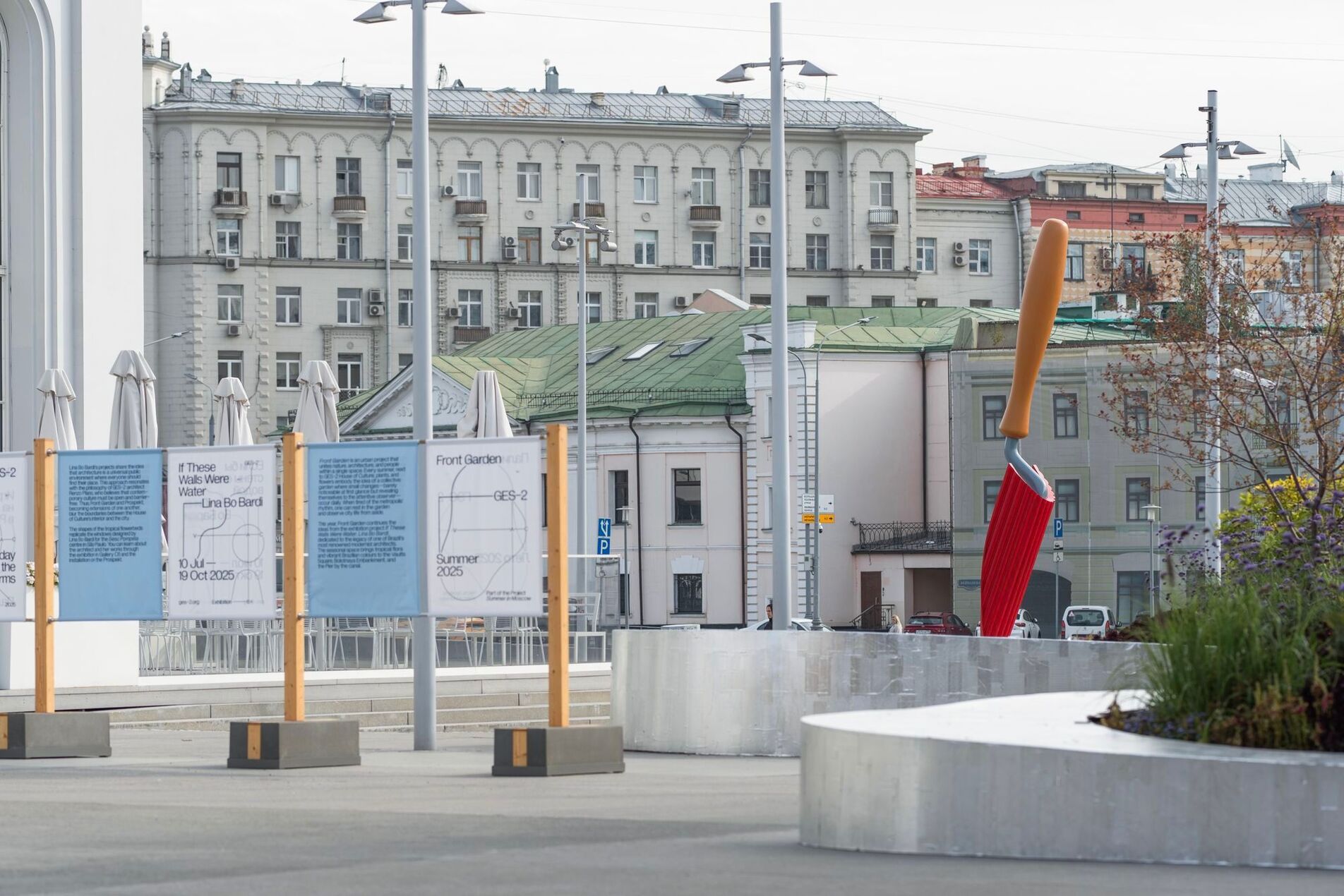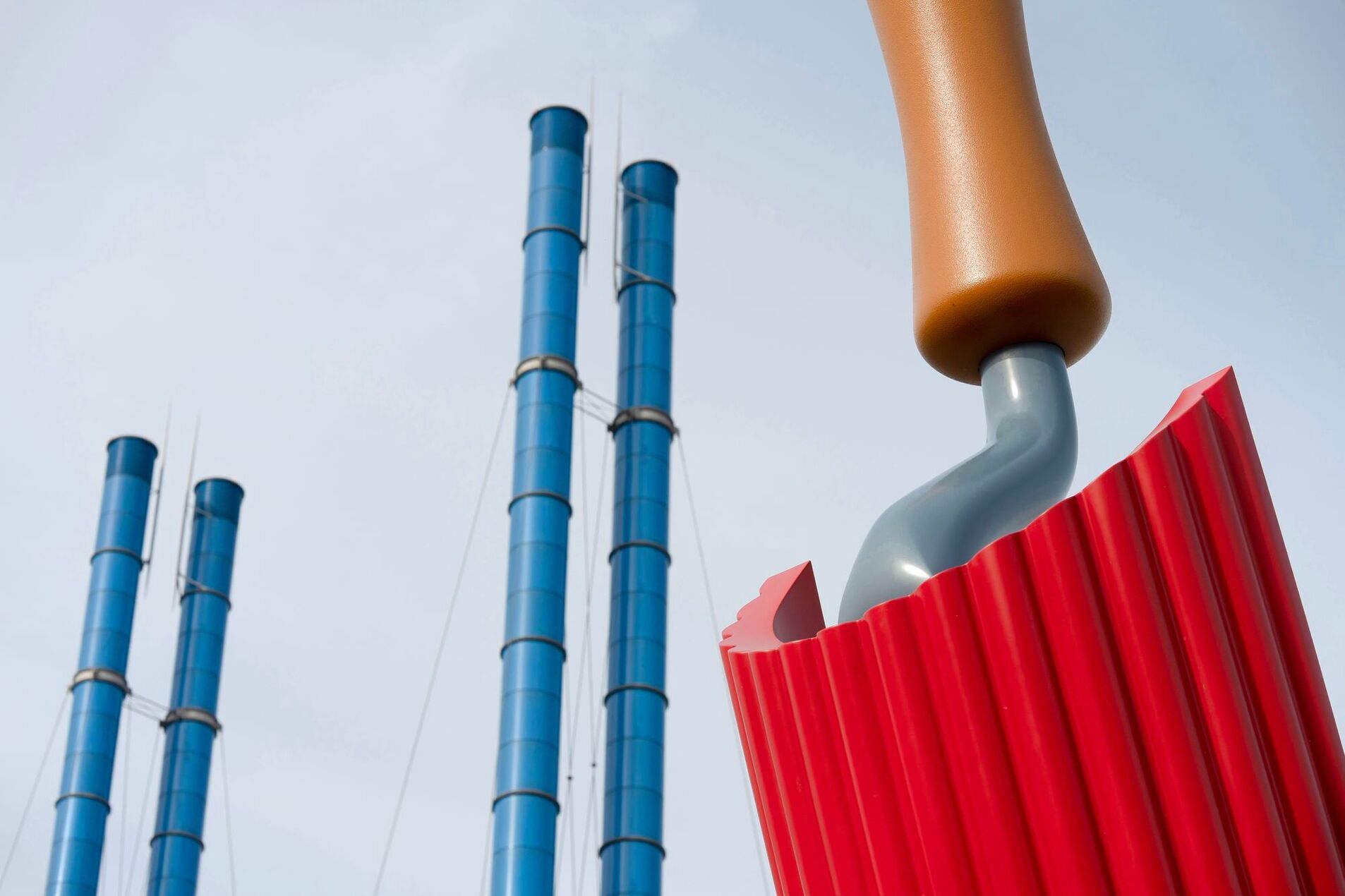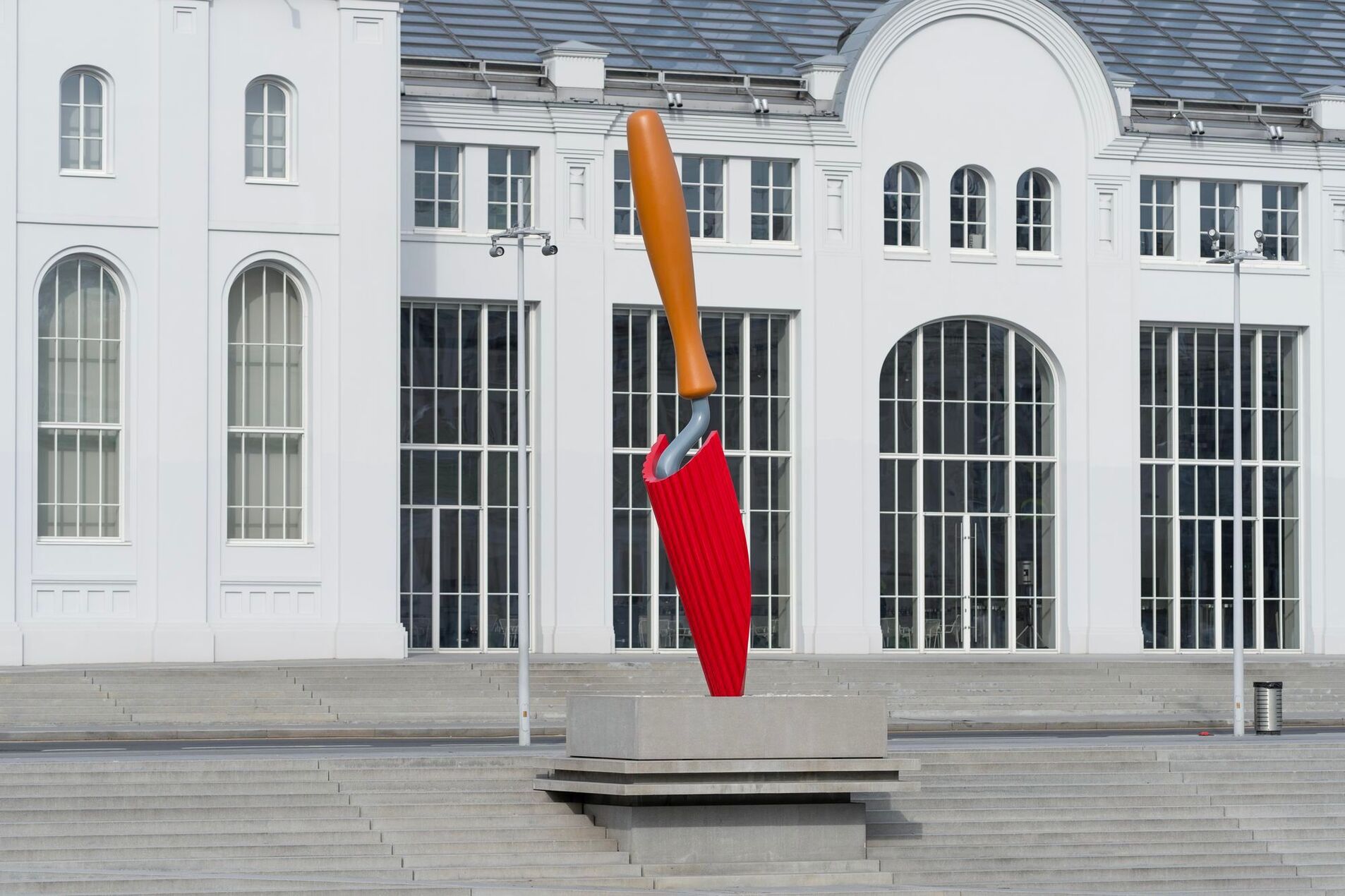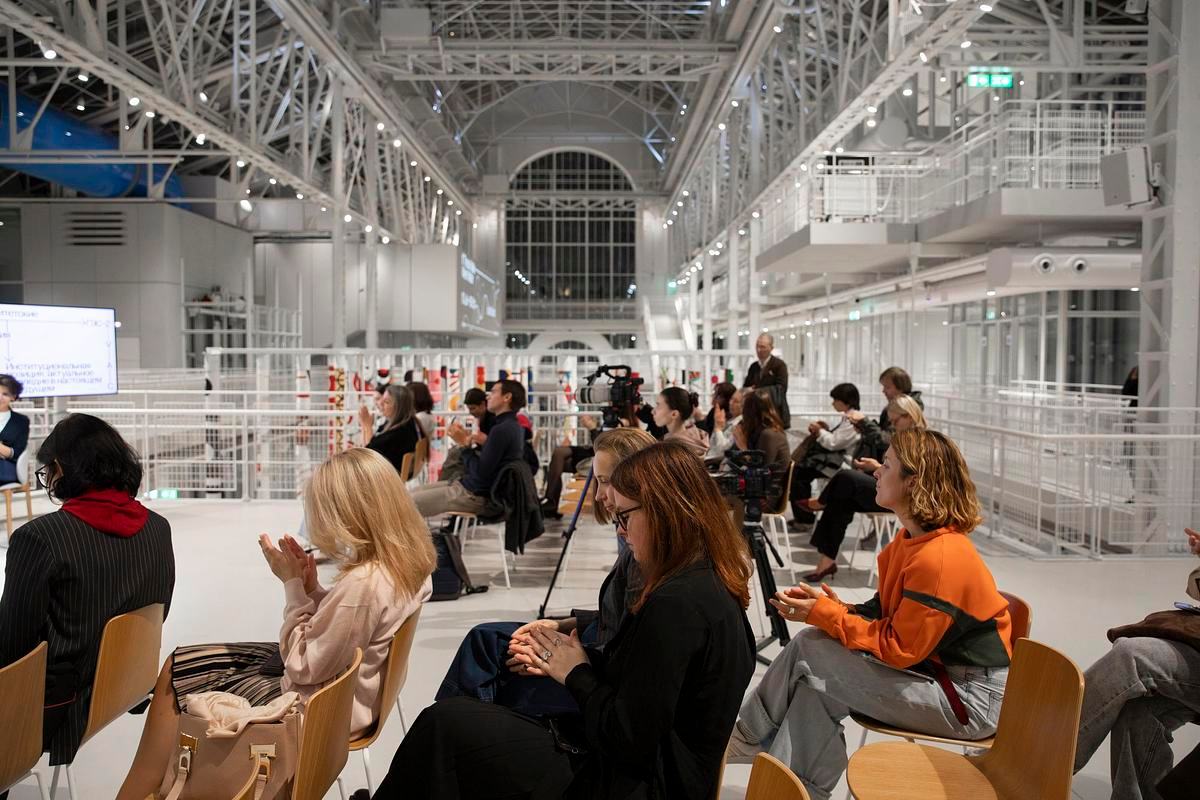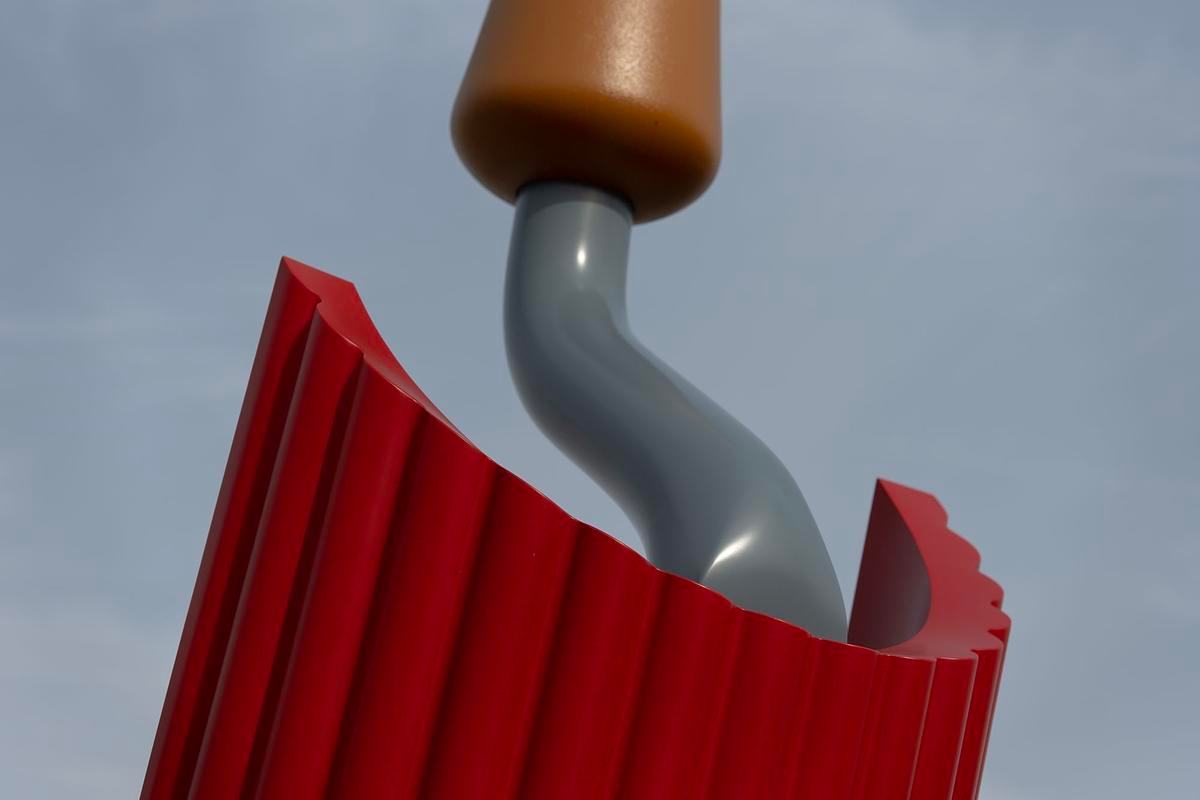The temporary installation in front of the
Claes Oldenburg and Coosje van Bruggen. Plantoir
- Date:
- from
3 Oct 2025
- Type:
- Place:
- Pier
Plantoir (2001) is a sculpture in the form of a familiar, but greatly enlarged garden tool on the descent to the Vodootvodny Canal. Its creators are pop art classics, artists Claes Oldenburg and Coosje van Bruggen. Plantoir was first exhibited on the roof of New York’s Metropolitan Museum of Art in 2002, and in autumn 2025 it took the place of Urs Fischer’s Big Clay #4.
All photos: Gleb Leonov
Claes Oldenburg and Coosje van Bruggen created sculptures in the form of greatly enlarged everyday objects: ice cream cones, clothes pegs, safety pins, and badminton shuttlecocks. In their works, the play with scale, the elevation of the mundane, and an ironic approach to classical art soften the formal solemnity of historical monuments. Oldenburg and van Bruggen’s sculptures are always displayed in open spaces; through their playful manipulation of form and content, they transform familiar urban landscapes, blurring the boundaries between reality and imagination.
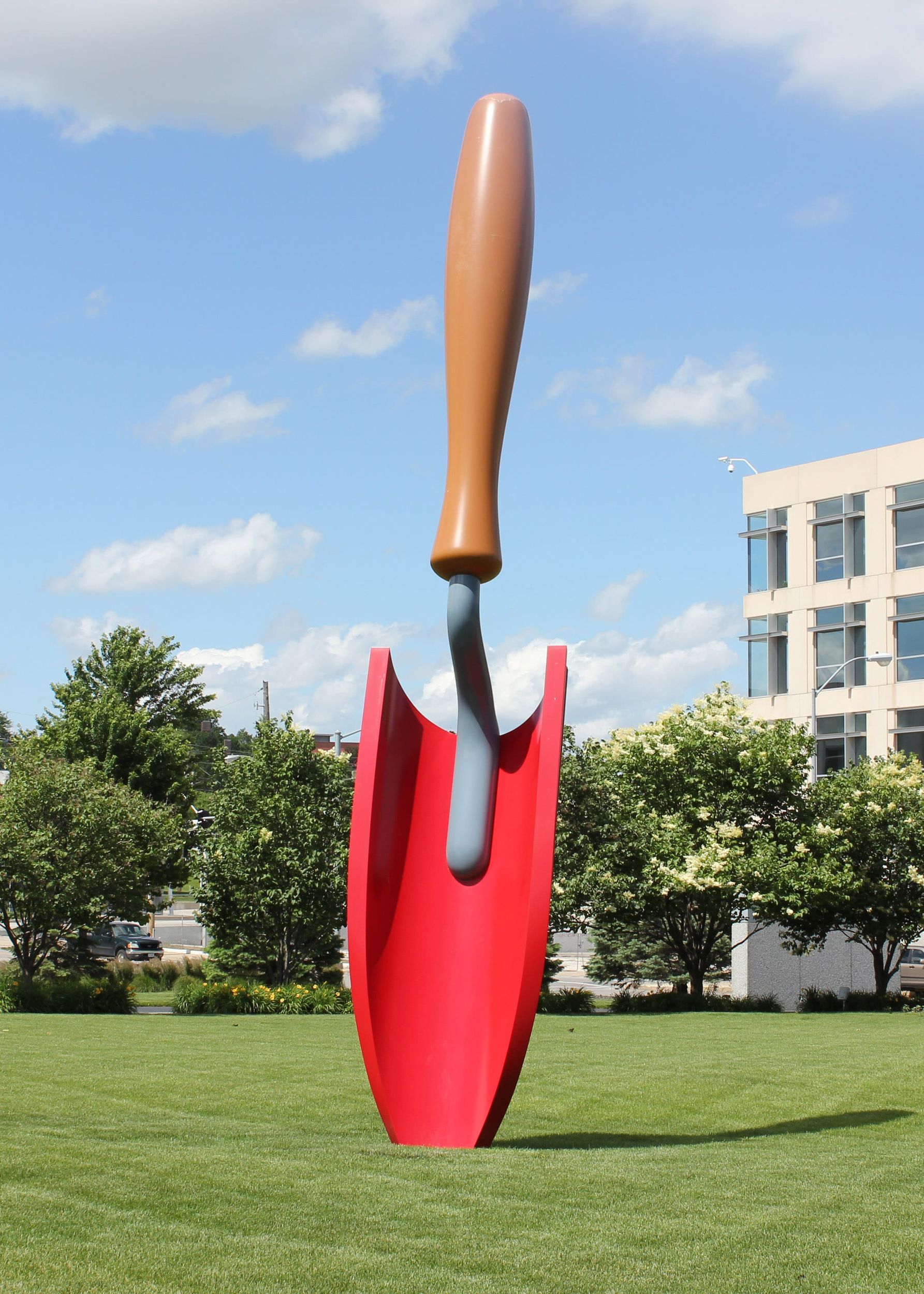
Claes Oldenburg and Coosje van Bruggen. Plantoir. 2001, Des Moines (USA)
The seven-metre-tall red Plantoir not only references the theme of creative labour as a way to find harmony in a changing world but also reminds us of the close relationship between nature, humanity and culture—the Latin word cultura literally means “cultivation, tilling of the land”. This work is about the cultivation of new ideas and meanings that can emerge from the simplest things—play and imagination.
This giant gardening tool is an almost naïve celebration of art awakening to reality and the true nature of things. It is not a step onto a pedestal, but a dive into the ground—to plant something new, to leave a trace. “Plantoir” speaks of how culture takes root in soil, in people, in gestures we share. And maybe it is art’s stronger, more playful, and more organic contribution to our society.
— Francesco Bonami, curator and art critic
About the artists
Claes Oldenburg (1929–2022) was an American sculptor of Swedish origin, a pop art master known for his large-scale works in urban and public spaces. He received his artistic education at the Art Institute of Chicago. One of his most recognisable techniques was creating enlarged sculptural versions of everyday objects, which were exhibited in museums, office buildings, universities, squares and private homes worldwide. Oldenburg’s solo exhibitions were held at MoMA (New York), the Solomon R. Guggenheim Museum (New York), the Whitney Museum of American Art (New York), the National Gallery of Art (Washington), the Museum of Contemporary Art (Los Angeles), Tate Modern (London), and Bundeskunsthalle (Bonn). Many works, including Plantoir, were created in collaboration with his wife, Coosje van Bruggen.

Coosje van Bruggen (1942–2009) was an American sculptor, art historian, and critic of Dutch origin. In her youth, she studied ballet before earning a master’s degree in art history with a specialisation in French literature from the University of Groningen (Netherlands). She worked as an assistant curator in the painting and sculpture department of the Stedelijk Museum in Amsterdam (1967–1971) before becoming an independent curator. In 1977, she married Claes Oldenburg and moved to the United States the following year. In 1982, she served on the selection committee for Documenta 7 in Kassel (Germany). Van Bruggen also taught at the Harvard Graduate School of Design.
- TalkOutrageous/Amazing![ Ru ]
12 Nov 2025 - 48 Questions about Pop Art, Claes Oldenburg, and Coosje van Bruggen[ Ru ]
11 Oct 2025 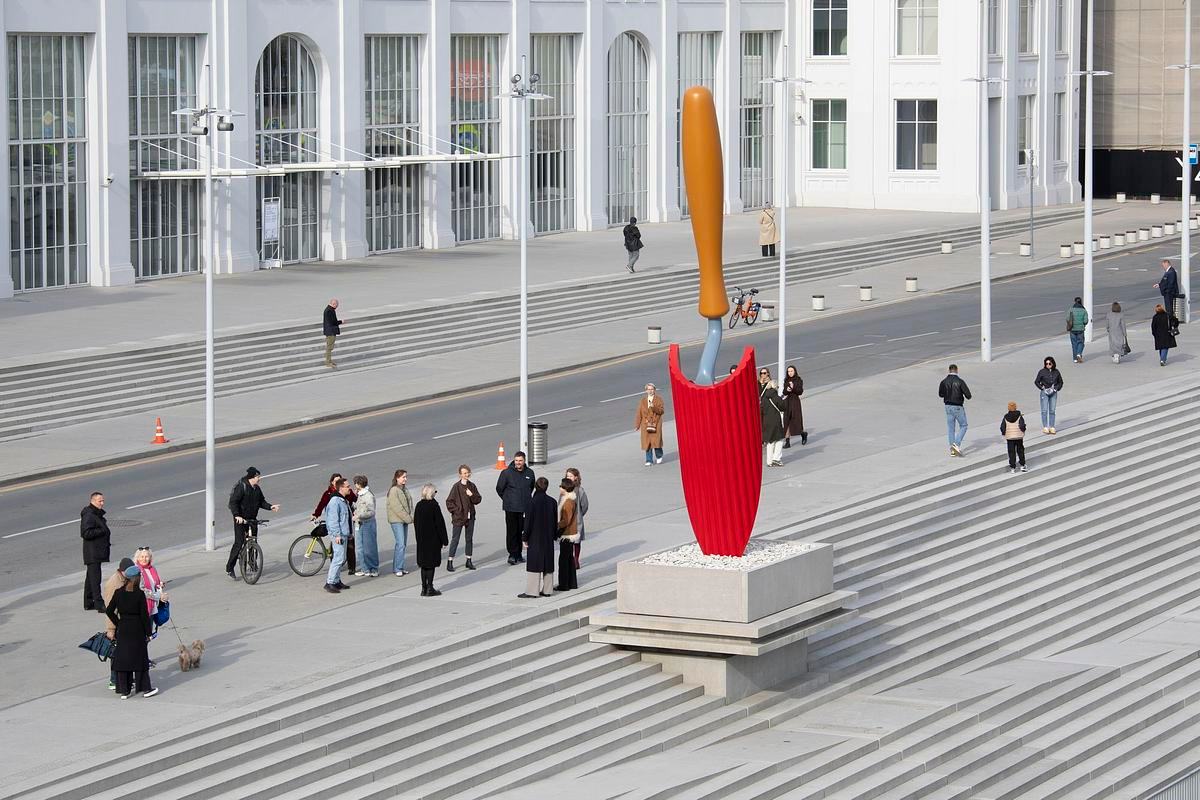 Mediated tourPlantoir or Garden Trowel?from
Mediated tourPlantoir or Garden Trowel?from3 Oct 2025
